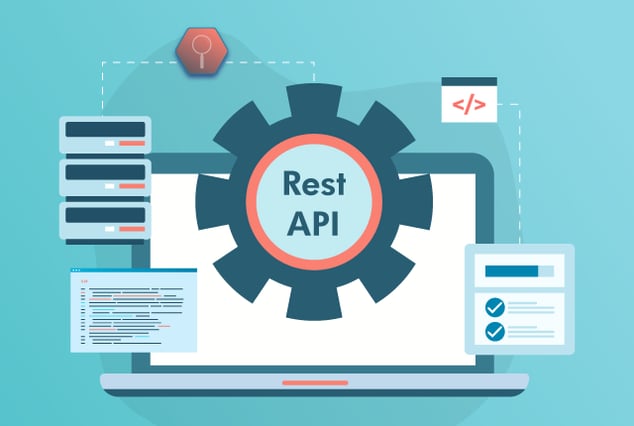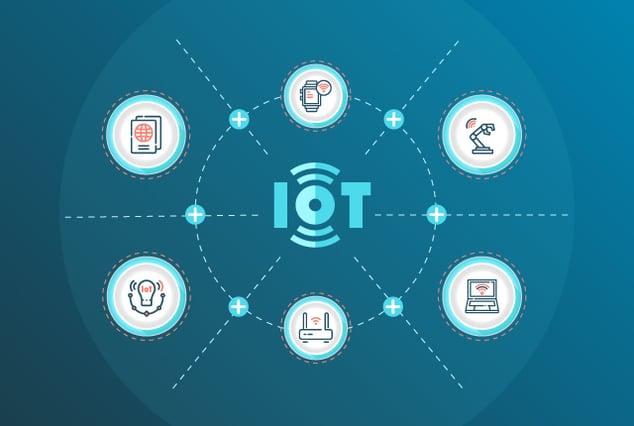
The Internet of Things (IoT) is more than just a thing. It’s become a global phenomenon that’s revolutionizing our perception of the online experience in relation to our connection with the real world. The internet is no longer exclusively for computers, smartphones and tablets when everyday devices as simple as toasters and coffee machines are elevated to “smart” status.
And it’s not going away anytime soon.
IoT continues to be one of the major software testing trends of 2020 with Gartner expecting 5.8 billion IoT devices to reach market this year alone.
That’s a lot of interconnected things. And it’s already one of the biggest challenges in IoT testing that companies face. How can effective testing practices be maintained when there are too many IoT platforms to review, too many communication protocols to test, too many new security threats on rise?
With a strong software testing strategy, of course. Your organization can deliver to market IoT software that’s speedy, safe and steadfast without cutting corners. Consider streamlining your IoT testing process by enforcing these best testing practices.
1. Regression Testing
In terms of IoT testing, regression testing is a type of IoT software test that’s executed to confirm a new program or new code change does not negatively impact or break existing code within the IoT software.
Think of regression testing like double-checking your work. These tests focus on re-executing previous test cases that have previously passed to ensure the current code works as expected without any side effects on existing functionalities alongside the new code change. Regression testing can also improve the results of other essential IoT testing, such as compatibility testing, functional testing, performance testing and load testing.
Regression testing can play a pivotal role in testing the connectivity of an IoT product. Many IoT platforms execute upgrades through over-the-air (OTA) updates so that manufacturers can upgrade firmware in devices remotely. By including regression tests that center around the interaction of the IoT software with the cloud and mobile apps, your team can verify that the IoT product should function as expected when these OTA updates occur. Without properly testing the product’s connectivity, these remote upgrades can disable the device and interrupt service for the user, leading to negative consequences on customer loyalty and company revenue.
Consider including regression tests that also focus on the offline state of the IoT device. There’s always a chance that the system will go offline, even for the most state-of-the-art IoT products. Your testing team should test the IoT software to see how the product performs in an offline state. Is there an alert set up when offline? How is data stored during the offline period? Is there any data loss once the IoT device comes back online?
2. Security Testing
IoT software testing that verifies the IoT software system is free from any threats, vulnerabilities or risks is called security testing. A healthy testing process includes security tests for finding any and all possible weaknesses or loopholes within the system that could potentially result in a loss of data in order to prevent any negative impact on revenue or company reputation.
In IoT testing, the goal of performing security tests is to identify any threats in the system and measure its possible vulnerabilities so that they can be addressed and solved before going to market.
Connectivity is what makes IoT products so appealing, but it’s this increased connectivity that increases industry concern for data security. A hacker only needs to gain access to one device in a customer’s network to access data across all devices. For example, critical data such as credit card information or social security card number can be accessed through an IoT toaster.
It’s up to your testing team to prevent these kinds of security threats that result in data loss and compromised privacy. Confirm password protection wherever personal data and sensitive information exists within the IoT software. Perform security tests that review the protection and encryption of data transferred between devices.
3. API Testing
In IoT testing, API testing is a type of IoT software test designed to validate the interaction of API (an abbreviation for Application Programming Interface) with the IoT software. Rather than sending user inputs and outputs, testers use the software to send calls to the API in order to get output and a response from the system. API tests can be performed individually as well as simultaneously alongside other tests.
API testing focuses on the business logic layer of the IoT software architecture, not the look and feel of the application. Since most IoT devices have no UI, API testing can effectively test the function and performance of the software. Because API testing is code-based, tests are easy to quickly implement and automate.
Too often organizations neglect performing API testing due to a lack of awareness of its business value. While a company may save money and go to market sooner with their software release, insufficient API testing often results in exposed APIs, putting the data of its users in jeopardy. Performing API tests confirms that correct data is sent between IoT devices and verifies the health of the interface that’s the heart of every IoT product.
4. Performance Testing
IoT testing that ensures expected performance of the IoT software under normal conditions is known as performance testing. The goal of performance testing is not to uncover bugs within the IoT software but to eliminate any performance blocks or glitches that prevent the application from running at optimal levels. Performance tests target the response time and reliability of the features within the software as well as the functionality of the system as a whole.
The focus of performance testing is to review an IoT software’s speed, scalability and stability. In other words, testers verify that the software application responds quickly to requests while measuring the user load capacity without the software malfunctioning or crashing.
IoT software introduces new dimensions not available in web and mobile applications. A successful performance testing strategy includes tests that center around user interface performance, network performance, internal processing performance, longevity and high data volumes. Testers should also confirm that the monitoring utility displays correct data for system usage, temperature and power usage.
Successful organizations in the IoT space adopt best practices in end-to-end IoT testing and choose a reliable QA service provider like QASource. Our team of testing experts specializes in all aspects of software testing and can help your company achieve reduced time to market while ensuring scalability. With our Advanced Technology Group providing you with our evaluations on the latest QA testing tools and technologies, we are dedicated to increasing your QA team’s efficiency and productivity. Get a free quote today.
Want to learn more about API testing and the IoT?
Watch our webinar The Future is API Testing: Trends and How to Propel Your Testing below!



